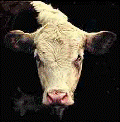Animal Science, Department of

Department of Animal Science: Dissertations, Theses, and Student Research
Date of this Version
5-2011
Document Type
Thesis
Abstract
This research was conducted to investigate the effects of feeding high levels of wet distillers grains plus solubles (WDGS) with straw on fatty acids profiles, lipid stability, retail color, and proximate composition (fats and moisture) of aged beef. Cattle (n = 336; 270 ± 9 kg) were fed corn/5% straw; 40 Distillers grain (WDGS)/5% straw; 70 WDGS/8% straw; 70 WDGS/25% straw; 77.5 WDGS/9% straw; 77.5 WDGS/17% straw, and 85 WDGS/10% straw on dry matter (DM) basis. There were significant increases in the proportions of polyunsaturated fatty acids (PUFA), omega 6, omega 3, and trans fatty acids when high levels of WDGS was compared to corn (P ≤ 0.05). Similarly, there were significant increases in meat oxidation and discoloration during retail display when compared to corn (P ≤ 0.05). Lipid oxidation showed significant treatment and day effects (P < 0.05). Steaks from cattle fed high levels of distillers grains and straw had significantly more (P < 0.05) amount of lipid oxidation (TBARS) by the end of retail display (d 7) when compared to steaks from cattle fed corn/5% straw. Higher levels of WDGS increased the amount of oxidation, a reflection of more PUFA in the steaks. Meat from cattle fed high levels of WDGS discolored more rapidly than meat from cattle fed lower levels of WDGS. There were significant (P ≤ 0.05) treatment-by-day interactions for discoloration and instrumental color. There was a trend in decreasing redness from 0 day to 7 day of retail display where beef from corn-fed cattle had the highest redness values at the end of retail display. Fat content was significantly (P ≤ 0.05) greater in the strips of cattle fed high levels of WDGS compared to corn-fed steers. There were significantly lower (P ≤ 0.05) moisture levels in strip steaks from cattle fed high levels of WDGS in comparison to steaks from cattle fed low levels of WDGS or corn. These data indicate that precautions against oxidation and discoloration are needed when cattle are fed high levels of WDGS, the meat is aged, and subjected to retail display in oxygenpermeable packaging.
Advisor: Chris R. Calkins


Comments
A THESIS Presented to the Faculty of The Graduate College at the University of Nebraska In Partial Fulfillment of Requirements For the Degree of Master of Science, Major: Animal Science, Under the Supervision of Professor Chris R. Calkins. Lincoln, Nebraska: May, 2011
Copyright 2011 Siroj Pokharel